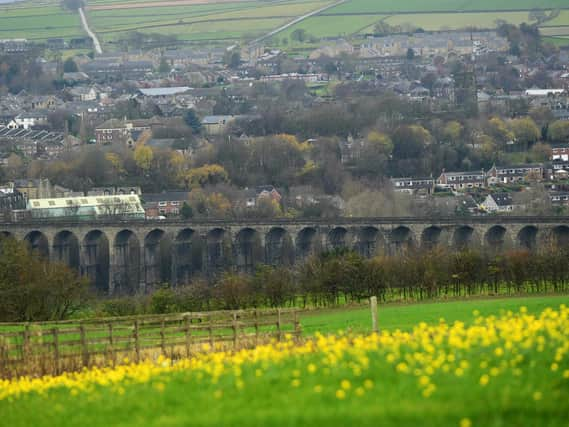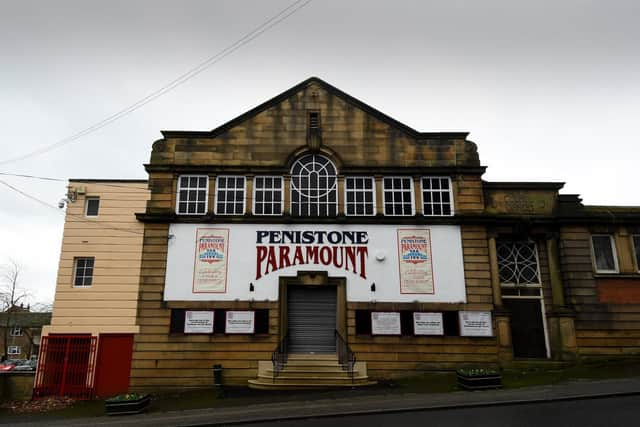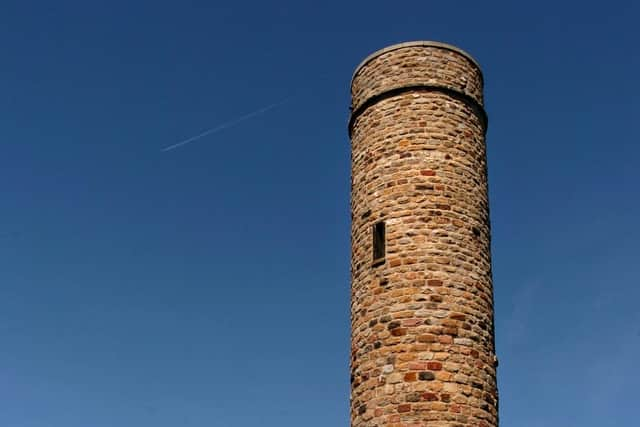Penistone has a rich history and impressive views and is home to a 'mighty' cinema organ


Its elevated position means visitors have the chance to drink in some glorious countryside, and landmarks in the county.
Talking about landmarks, there’s the imposing Hartcliff Tower. It is very nearly 1,200 feet above sea level and, when the public are (occasionally) allowed access to the parapets – via an exhausting interior iron spiral staircase – it affords some stupendous views for many miles around.
Advertisement
Hide AdAdvertisement
Hide AdWhat purpose does the tower (or folly) serve? Well, apart from giving visitors an energetic work-out as they climb to the top, and a great gander at the landscape when they get there, the answer is not a lot.


It was built in 1856 at the behest of a wealthy linen merchant called Henry Richardson, who clearly had nothing better to spend his cash on. Back then, the folk hereabouts were so bowled over at Richardson’s ingenuity that they quickly voted him in as Mayor of Barnsley – Penistone lies within the borough boundaries.
The mystery was, then as now, why Richardson wanted this folly in the first place? Inventive minds came up with several theories. Perhaps he just wanted to sit at the top and covetously gaze at all that he owned?
Perhaps he could send one of his men up there, to give directional orders for shooting parties when the game season arrived?
Advertisement
Hide AdAdvertisement
Hide AdOr could it be that a servant could be stationed as a lookout, to spot the great man returning from his business trips? All perfectly plausible, but who knows? Anyway, the great tower still looms above the town a mile or so away to this day.


There have been markets in the centre of Penistone for many centuries, though, compared with other places in the county, the charter and royal seal of approval here came relatively late in 1699. Today (under normal circumstances), it still carries on, and is a popular meeting place on both Thursdays and Saturdays.
The market is in the splendid Cruck Barn, an open-sided building which was specially designed for the town centre site. The idea of this shape – solid, sturdy and built to last – goes back to Anglo-Saxon Britain, and perhaps even before. Our ancestors would be all-too-familiar with the idea, and their towns and villages would have had many fine examples of the design.
Penistone’s imposing market barn is not the only impressive building in the town. There are some striking buildings not too far away – the Grade I-listed parish church (dedicated to St John the Baptist) is steeped in history, with the remains of a Saxon-built cross in the walls, and the base of another in the churchyard itself.
Advertisement
Hide AdAdvertisement
Hide AdThe first written records of clergy in the area date to around 1200, and the tower of the building was built about 300 years afterwards. There are eight bells, which ordinary visitors won’t be able to see, but they can admire – if they look up – the shining stainless steel weathervane, a gift from a talented Penistone local, the late Arnold Smith.
His idea was to represent two traditions, that of a fish (the early Christian symbol) and of a local industry, the manufacture of steel. On a sunny day, the interior is lit by some brilliant (and priceless) stained glass.
The entrance to the churchyard is guarded by a beautiful lychgate, a memorial to a vicar here who held that post for 60 years, which could well be the record for a clergyman of the Church of England serving in just one particular incumbency.
He was the Rev Canon William Turnbull, who arrived in the parish in 1855, and died there in 1915. Canon Turnbull would have recognised several things that we see today. One is the memorial stone to Nicholas Saunderson, a local lad born in 1682 and who came from nearby Thurlstone.
Advertisement
Hide AdAdvertisement
Hide AdHe tragically lost his sight at just 12 months old (through smallpox) but he taught himself to read by tracing the letters on the headstones of the churchyard, and then went to Penistone Grammar School (where he learned Latin, Greek and French) and then on to Cambridge.
There he became friends with such luminaries as Isaac Newton and Edmond Halley. He earned a degree and was later appointed Lucasian Professor of Mathematics, a post held, over the years by the likes of Charles Babbage and Stephen Hawking.
Saunderson was also a Fellow of the Royal Society and was recently recognised – how many other mathematicians achieve this accolade? – by having his story retold in a musical, written by schoolteacher Andy Platt and aptly called No Horizon, which made it to the Edinburgh Festival Fringe in 2016.
Like anywhere, folk in Penistone wanted entertainment, and it wasn’t too long before the Assembly Hall, built in 1914, became a cinema. The stage was kept and to this today is still used for live events. Local lass Kate Rusby, the celebrated folk singer, has appeared here many times.
Advertisement
Hide AdAdvertisement
Hide AdThe Paramount (as it now is) seats 344 people, was completely refurbished during the first lockdown of 2020, and is run by Penistone Council and staffed by enthusiastic and hugely knowledgeable volunteers.
This community asset is also home to the “Mighty Compton Paramount Cinema Organ”, and there are regular concerts when the thunder of this impressive musical beast is unleashed. It is one of the few remaining (and operational) organs of its kind left in the country.
Sheep and cattle farming is important to Penistone, and the breed special to this area is the Whitefaced Woodland, a cross between the Woodland and the Penistone sheep. There are plenty of them on the many open acres of this patch, but elsewhere they are uncommon and are listed as a vulnerable breed by the Rare Breeds Survival Trust.
They are one of the largest hill breeds, both sexes are horned and both are versatile, because they have short, fine wool often used in the upmarket carpet trade (and they are pretty tasty on the plate, as well).
Advertisement
Hide AdAdvertisement
Hide AdLike so many other Yorkshire towns, it was the arrival of the railway in 1845 (operated by the splendidly-named Sheffield, Ashton-under-Lyne and Manchester Railway Company) that gave Penistone added energy. For many years it was an important junction and home to a large depot for engineering works, which was a big local employer.
The town’s place in railway history (and controversy) has been assured by its proximity to the three Woodhead tunnels, which have their trio of eastern portals close by. The first was started in 1837, and they were to serve lines to the east and west. Their closure was seen as a grave error by many.
Penistone is proudly twinned with Grindavik in Iceland, has a celebrated annual agricultural show, and in recent years there have been well-supported literary, folk and music festivals.
It’s a place with a close knit community and a keen eye to the future. When the lads doing the surveying for the Domesday Book turned up in 1086 (in the years following the harrying of the North) they described the settlement in one word – “waste”.
If they returned today they could write many thousands of lines and still not get close to capturing the town’s onwards and upwards spirit.
Comment Guidelines
National World encourages reader discussion on our stories. User feedback, insights and back-and-forth exchanges add a rich layer of context to reporting. Please review our Community Guidelines before commenting.